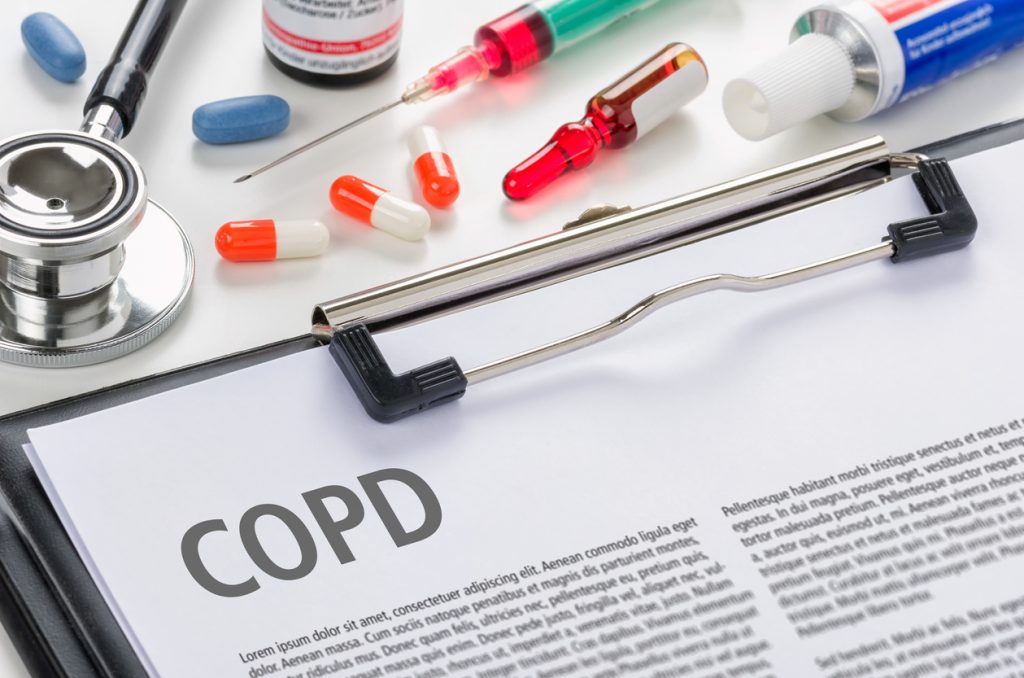Targeted Lung Denervation might not be a term you know, but you might be hearing it soon–if you or someone you love has COPD. It has been a while since we brought you new updates from the world of research so this week’s blog features some exciting new research for COPD patients. At FLASS, as we have said previously, we feel the worlds of patient care and research must constantly communicate in order to save lives.
Introducing Targeted Lung Denervation Research

Before a Procedure is accepted, it must be rigorously tested.
In July of this year, COPD News Today published an article, “COPD Treatment with Targeted Lung Denervation Found Safe and Feasible, Study Reports.”
Moreover, the respected publication, Science Daily, presented Dr. Dirk-Jan Slebos’ study and his comments on it in an article in September of 2018.
His study involved 82 patients. He is from the University Medical Centre Groningen (The Netherlands), and in September he told the European Respiratory Society International Congress that a technique called Targeted Lung Denervation (TLD) had reduced COPD problems by more than 50% in patients in his trial of the procedure.
He compared them and their results with the patients who received the sham (placebo) treatment in a rigorous clinical trial.
The TLD Treatment Study Making News Now
In his address to the ERS Congress, Dr. “Half of them were male and they had an average age of nearly 64 years. Three to six months after the treatment, 71% of patients who had received the sham treatment had an adverse respiratory event related to COPD compared to 32% of patients who received the TLD treatment.” It’s a minimally invasive treatment and investigative procedure, and it’s termed TLD for short. We can understand that since Target Lung Denervation” is a rather long expression for conversation about the procedure.
Other Words for Research: Treatment, Testing and Trial
We agree with COPD Today, that we must continue to support studies of new approaches to COPD treatment. Yes, we have options such as bronchodilators and inhaled glucocorticosteroids, but what if we could do more against this disease? Likewise, what if we could improve the lives of COPD patients with a one-time non-invasive procedure? That’s what targeted lung denervation is all about.
A Quick Side-Note from FLASS
At FLASS We owe it to our COPD patients to continue learning about new approaches to improve their quality of life.

New Therapies Can Bring New Hope to COPD Patients.
We also love our patients, friends and online readers to be informed about some of the research and new technology that scientists are developing.
TLD is a new candidate for COPD treatments and it still needs more study in the area of long-term safety. But if you are interested in respiratory care or COPD, you will be hearing more about it, so we wanted to make sure you got the scoop from us.
Getting Specific about TLD as a New Candidate for COPD Therapy
For patients with moderate to severe COPD, this therapy could be a godsend. This procedure, done under sedation of course, involves:
1. The doctor passes a special catheter through a bronchoscope into the lungs.
2. Then, he utilizes a type of electrical energy called radio-frequency, Rfd, to interrupt nerve transmission outside the main bronchi. You might recognize this same type of energy from articles on bronchoplasty or broncoscopy .
3. According to COPD News Today, “By disrupting nerve transmission, TLD dilates the bronchi (bronchodilation) permanently.”
4. With the bronchi dilated, the COPD patient’s body will reduce mucus production. Likewise the procedure decreases airway inflammation. How? The phenomenon is chemical as well as physical.
5. The therapy causes the body to reduce the release of the neurotransmitter acetylcholine. This is important because acetylcholine influences “airway muscle tone, mucus secretion, and inflammation.”
Let’s Take a Look at Recent TLD Pilot Study of COPD Patients
A great beginning study for TLD happened in 2015. Targeted Lung Denervation became a pilot study and “22 COPD

Discuss your treatment options with your health care provider if you are diagnosed with COPD.
patients participated, The conclusion of the testing was that TLD in both lungs in a sequential fashion was feasible, safe, and well-tolerated.”More recently research scientists conducted a multi-center study in 15 patients (47% men, mean age 63.2)
They all had diagnoses of with moderate to severe COPD. They participated in a study to discover the safety factor behind treating both lungs with TLD, within a single procedure.
1. FLASS wants you to know that the team in that study proposed that treating with TLD in both lungs would be better than dividing it into two surgeries.
2. They believe this because a both-lungs-at-once approach reduced exposure to anesthesia. Likewise this approached lessened the risk of exacerbations caused by bronchoscopy.
3. The Follow-Up: The team also evaluated three-year follow-up data in the treated patients. They “took the first a first look at the potential long-term effects of targeted lung denervation (TLD)
Setting up the Criteria for TLD Research: Parameter for Success or Failure
Among the factors they analyzed were:
- “Absence of sustained worsening of COPD directly attributable to TLD up to one year after treatment;
- Technical feasibility;
- Change in pulmonary function;
- Exercise capacity;
- Health-related quality of life issues.”
Discovering the Results of the Targeted Lung Denervation Procedure
They discovered that the show of good results only took 89 minutes.
- Likewise they discovered none of the patients showed any No patients showed deteriorating condition.
- The TLD caused no complications from their COPD.
- Also, patients only experienced a low rate of COPD the exacerbations over three years.
Tests for Targeted Lung Denervation: What about Lung Function?
The scientists tested lung function, and exercise parameters and time after time they discovered that targeted lung denervation without bronchodilators led to the same benefits as long acting inhaled anticholinergic therapy, a traditional COPD treatment.
Over the three year period, patients suffered only a total of 12 serious physical events and only 6 were related to the
respiratory tract. Not one single event was related to the TLD.
A Rather Amazing Conclusion to the Research Report
The research scientists have said, “TLD delivered to both lungs in a single procedure is feasible and safe with few respiratory-related adverse events through 3 years…“
And they added, “that the overall low rate of severe COPD exacerbations during the follow-up period of up to 3 years appears noteworthy.” FLASS might say it appears remarkable!
Flash forward from the 2015 study to this year’s Targeted Lung Denervation research by Dr. Slebos and his team, and we find ongoing directions. According to the team, future research should focus on:
1. Optimizing the energy dose,
2. refining the procedure,
3. and identifying patients most likely to benefit from targeted lung denervation.
According to Science Daily, Dr. Slebos elaborated, “The results I am presenting today suggest that TLD can be an additional treatment option for COPD patients who are already receiving the optimum drug treatment for their symptoms. It offers the ability to significantly reduce symptoms and exacerbations even in patients already on aggressive medical therapy.”
There are plans for a new clinical study next year for TLD. And he added, that the study, “With the addition of

Targeted Lung Denervation might put more breath, and more quality life, in the days of COPD patients.
About the Next Clinical Trial: AIRFLOW-3, which will have a similar design but will include many more patients, there will be a profound amount of evidence for the procedure, gathered in a highly scientifically rigorous manner.”
Praise for the Study and Promise for More
We are happy to report that after hearing the results of Dr. Dirk-Jan Slebos and his 82 patient TLD study, Professor Daiana Stoltz, from University Hospital Basel, Switzerland, Chair of the European Respiratory Society Education Council said: “These are really exciting and important results. COPD is a difficult disease to treat successfully and the results from this well-conducted trial of Targeted Lung Denervation show that it can make a significant difference to the health of patients.”
Just as she intimated, we at FLASS believe we are in strong need of more and better treatments for COPD. So we look forward to more trials which will demonstrate the validity of the TLD treatment. Here at FLASS, we’ll keep an watchful eye on this other new research, coming in 2019. Once again, thank you for reading our FLASS blog, and Happy Holiday Shopping!

